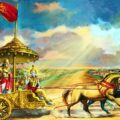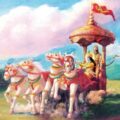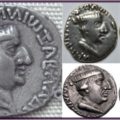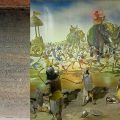436 Inscriptional Evidences on Kaliyuga and its Timeline; An Analysis
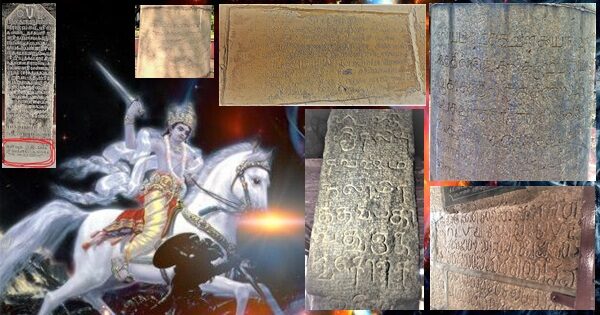
Kali yuga epoch at which Kaliyuga had begun is an important historical event in the history and chronology of India. However, it is frequently mentioned that there were only a few literary evidence for Kaliyuga, especially in Puranas and in the ancient astronomical texts and thus, there are not much epigraphic evidence to prove Kaliyuga and its epochal year. It is also believed that there were only a very few inscriptions i.e., less than ten, that were dated in Kaliyuga years. Hence it is believed that the Kali yuga epoch mentioned in these texts is astronomical and has nothing to do with history and chronology of India.
However, dates of many historical events were mentioned in Kaliyuga years. Thus, when we derive precisely the year of Kali yuga epoch, we can fix the date of Mahabharata War and thereby the dates of Sree Krishna, Pandava and Veda Vyasa and from other texts, the date of Adisankara, Vikramiditya, Salivahana, King Pramara, King of Saka and dates of many other kingdoms. Hence, the Kaliyuga epoch is more important chronologically. The date of Mahabharata war can be fixed based on the evidence found in Mahabharata text of Veda Vyasa, Puranas, Aryabhattiyam, Text of Vruddha Garga and Brihat Samhita of Varahamihira. As per these texts, Mahabharata war was fought just 36+ years before Kali yuga Epoch. Sanskrit texts like Praceena Sankara Vijaya (Sushama) and Punya Sloka Manjari mentioned the year of birth and siddhi of Adisankara as Kali 2593 and Kali 2625th year respectively. Bhavishya Mahapurana mentions that King Pramara started his dynasty in Kali 2710th year and King Vikramditya was born in Kali 3000th year. Kalidasa mentioned that he wrote Jyotirvidabharanam in Kali 3068th year and he was contemporary to King Vikramaditya, Varahamihira and many scholars. Astronomical texts mentioned that King Salivahana started his era in Kali 3179th year. Thus, the year of Kali yuga epoch is very important and to prove it precisely, inscriptional evidences are the need of the hour.
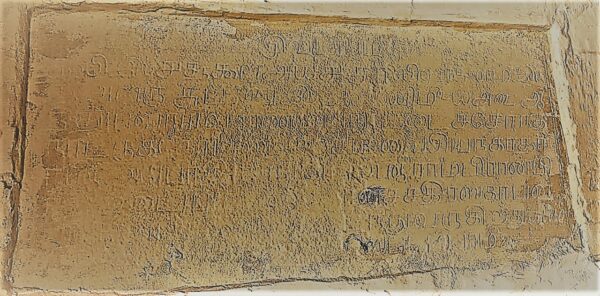
Hence, it becomes very essential to derive and prove the beginning year of Kali yuga with strong, concrete and conclusive evidence. The best proven method is to derive it through inscriptional epigraphic evidence. So far, the only one inscription, quoted by scholars to refer the beginning year of Kali yuga is the Aihole inscription of Pulakesi II. It mentions that after Mahabharata war, 3735 years in Kali yuga and 556 years in Saka era were elapsed, at the time of Aihole inscription. Salivahana Saka 556 is 634 C.E. (556 + 78), as Salivahana Saka began in 78 C.E. Then, Kali yuga 3735 is also 634 C.E. (3735 — 3101). This clearly shows that Kali yuga began in 3101 B.C.E. Except for this single epigraphic evidence, various texts are silent on any other inscriptional evidence, regarding the date of Kali yuga.
Thus, it is important to find out many more epigraphic (inscriptional) evidence to prove the year of beginning of Kali yuga. When this very hard task is carried out with confidence and hope, it started giving results, which are amazing and astonishing. One year back, when I read the inscription of Madurai Konda Parantaka Chola Chakravarthi, dated at 4044 Kali yuga, it prompted me an irresistible intense desire to search for other inscriptions dated in Kali yuga, either engraved on copper plate, stone and other materials. Thenceforth I started searching for the inscriptions dated in Kali yuga. Finally, I have found out 436 clear-cut inscriptions dated in Kali yuga. In these, majority of the inscriptions are with Saka era (some clearly mentioning it as Salivahana Saka itself), Vikrama Samvat, Laukika year, Kollam Era, Kochi Date and Common Era, in addition to Kali year. Besides, more than 50% of the inscriptions are with the names of the dynasty and kings. Many inscriptions are with the details of verifiable persons also. Hence, most of the inscriptions can be cross checked and are cross verifiable. Then I started compiling these data, added with some details, in a book by name, Kaliyuga: Inscriptional Evidence so that it will be much useful to the future researchers.

During this task, I have noticed many interesting things. An inscription mentioning its date in Kali yuga is discovered in Thailand and it was dated at Kali yuga 4332. The language is Sanskrit. It was issued by King Candrabhanu of Tambralinga (Nakhon Si Thammarat or Ligor, Southern Thailand) who raided Sri Lanka when Parakramabahu II was the King of Singala (Sri Lanka). Parakramabahu II came to power in 1234 C.E. This proves, as per this Jaiya Inscription of Southern Thailand in Malay Peninsula, that Kali yuga began around 3101 B.C.E., Thus, foreign evidence is also there to prove the year of beginning of Kali yuga. The other interesting fact is that some inscriptions were dated in three eras i.e., Kali yuga with Salivahana Saka and Common Era. The inscription on the swinging cot in Sree Vedanayaki Amman Shrine of Bhavani Sangamesvara Temple in Tamilnadu State can be cited as an example. It states that the ivory swing cot of Goddess Vedanayaki Amman at Bhavani Kudal, Tamilnadu State was the benefaction of Ulliyam Garo Durai, the English officer of East India Company. The signature of the donor is also engraved as: W.Garrow XI January 1804. It is dated as Kali yuga 4904, Salivahana Saka 1725, Rudhirodgari and XI January 1804 C.E. Salivahana Saka 1725 is 1803 C.E. (1725 +78). Then Kali 4904 is also 1803 C.E. (4904 – 3101 = 1803). This indicates that Kali yuga began in 3101 B.C.E. Since Common Era starts from January, it was mentioned as 1804 C.E., where as in Kali and Salivahana Eras, the new year will start from March or April only. Refer Record of Services of the Honourable East India Company’s servants in Madras Presidency from 1741 to 1858 at page 99, mentioning the period of service of William Garrow. Thus, the inscription fits within the period of William Garrow’s service.
Another interesting aspect lies in the Anaimalai Inscription at Kali 3871. It was engraved at the entrance (left side) into the Central Shrine of Narasimha Temple at Anaimalai (Narasingam near Melur, 10 kilometers east of Madurai, Tamilnadu State). Its date is Kali yuga Samvat 3871. It was engraved during the regnal period of Pandya King Parantaka. The Chronology of Pandya, Chalukya of Badami, Rashtrakuta, Western Ganga and Pallava Dynasties clearly indicate that the period of reign of this Pandya King Jadila Parantaka Pandya (son of Maravarman Rajasimha I) was 765 – 815 C.E. Thus, the inscription dated in Kali yuga 3871, confirms that Kali yuga began in 3101 B.C.E. (3871–3101 = 770 C.E.), which is within the regnal period of Jatila Parantaka Pandya (765 – 815 C.E.). Thus, even the southernmost King of our Nation has engraved the inscription in Kali yuga date.
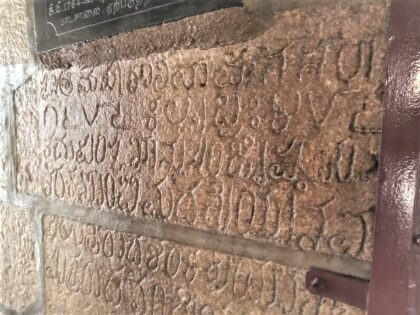
These 436 inscriptions dated in Kali yuga are arranged in chronological order from ancient to modern. Each inscription is described with details of place of find, year, language, details of any other era given along with Kali date like Salivahana Saka, Vikrama Samvat, Laukikabda, Kollam Era, Kochi Date or Common Era, the Dynasty and King at whose period the inscription is engraved and a brief detail about the inscription. It has been found that most of the inscriptions had corroborative and secondary proofs that indicate the beginning of Kali yuga in 3101 B.C.E. and thus they are cross verifiable. They mentioned the names of Dynasties and Kings or Heads of Maths and or with any one or two additional eras. Thus, the inscriptions quoted, are with strong and assertive proofs.
These 436 inscriptions with dates in Kali yuga clearly prove Kali yuga began in 3101 B.C.E. Then I put forth these 436 inscriptions in chronological order from ancient to modern, for the knowledgeable considerations of the scholars and also of the common people in the book: Kali Yuga: Inscriptional Evidence. Here the inscriptions are detailed in the following order.
1. The book in which the inscriptions are described,
2. The chapter in which the inscriptions are described,
3. Whether the inscription is inscribed on copper plate or stone or other materials,
4. Publication serial number and page of the chapter/book,
5. The place of find or donor of the copper plate or place of the stone or other material on which it is inscribed,
6. The name of the Dynasty and King,
7. The date of the inscription,
8. Language and other details of the inscription and
9. Remarks.
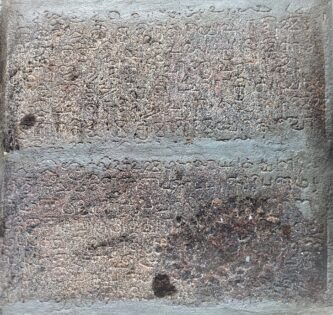
In this manner all the 436 inscriptions are detailed, followed by analysis and an apt conclusion and references. The analysis concludes as follows.
The number of years elapsed since the beginning of Kali yuga up to the date of the inscription were inscribed clearly in as many as 436 inscriptions. The very same is detailed in this book. However, this is not a complete list of inscriptions dated in Kali yuga. If we work, we can find more inscriptions with Kali yuga date. However, as I want to publish the details that are collected in this one year of hard work, so that they can be available for the use of the scholars and common men, I am compiling the details of my work in this edition. With the blessings of Almighty, I will add the remaining in the second edition. Out of these 436 inscriptions, 367 inscriptions (84%) mention other eras in addition to Kali yuga date and or with details of Dynasty, Kings, Queens, Rulers, Sub-ordinate rulers, Zamindars, petty rulers, heads of Math etc. Thus, with these additional details, the beginning of Kali yuga can be cross checked and are thus cross verifiable. The additional era mentioned are Salivahana Saka, Vikrama Samvat, Laukikabda, Kollam Era, Kochi date, regnal year of the ruler and even Common Era (C.E.). There are 130 inscriptions with Kali date alone. This indicates the people’s confidence that by just mentioning Kali year alone, one can derive the period and year of that inscription correctly. Thus, in those days, even common people knew the beginning year of Kali yuga without any confusion or doubt. Thus, it shows that the Kali Era was much prevalent, usual, extant and commonly used in our Nation, since the early years of history and even up to 19th century C.E.
The details described in this book clearly indicate that the use of Kali yuga date is prevalent and a common practice in all the parts of our Nation, i.e., from Jammu and Kashmir in the north to Tamilnadu and Kerala states in the down south and also from Gujarat in the west to Sylhet of Bengal and Assam in the east. The inscriptions dated in Kali yuga are present in the states and union territories of Tamilnadu, Kerala, Andhra Pradesh, Telangana, Karnataka, Maharashtra, Odisha, Gujarat, Jammu and Kashmir, Uttara Pradesh, Goa and in New Delhi, Mumbai and Kolkata. It is found in Sylhet of Bangla Desh. It is even found in the South East Asian countries i.e., at Tambralinga of Thailand. Thus, it reveals that Kali era was followed in all the parts of our Nation and in adjacent Nations also.
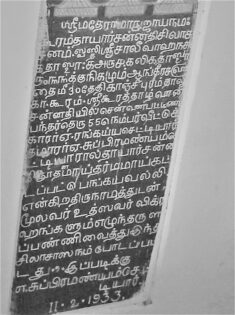
The inscriptions dated in Kali yuga are in almost all the languages of our Nation. It is either in the language and or script of Sanskrit, Sanskrit in Grantha, Sarada, Nagari, Gaudiya, Kannada, Malayalam, Oriya and Telugu, Tamil, Telugu, Malayalam, Kannada, Kanarese, Mahrathi, Oriya and even in English. Many inscriptions are in Tamil Vatelluthu also. This points out the wide prevalence and common usage by all the people of our Nation.
The period of these inscriptions varies from 6th century C.E. to 19th century C.E. i.e., for more than 1300 years of continuous and uninterrupted usage. The prevalence of usage in the society for more than 1300 years proves that it is deep rooted in the minds of the people and it is a common and essential routine in our Nation.
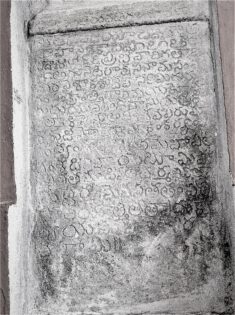
Further, the analysis of the details reveals that it is not only the Kings, Queens, Rulers, Sub-ordinate and Petty rulers, but even the heads of Maths and common people also used this Kali yuga date to describe their period of existence. Thus, it is used in all parts of our Nation, in all the languages and all periods of time, by rulers as well as common people.
The 306 inscriptions that are dated in any one or two eras in addition to Kali era proves clearly and conclusively that the Kali yuga began in 3101 B.C.E. Salivahana Saka which began in 78 C.E., Vikrama Samvath which began in 57 B.C.E., Kollam Era which began in 825 C.E., Kochi date of 1341 C.E. and the Common Era dates correctly point out the beginning year of Kali yuga in 3101 B.C.E. Besides 227 inscriptions mentioned names of the Dynasty and Kings, Queens, Rulers, Sub-ordinate and Petty rulers, Heads of Math etc., also prove that the Kali yuga began in 3101 B.C.E.
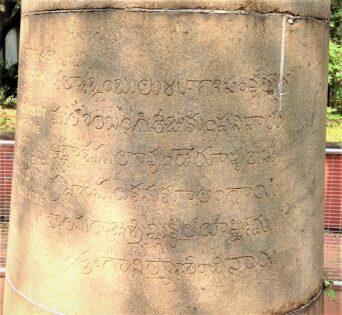
As pointed out in the beginning of the book that the astronomical texts of our Nation like Vatesvara Siddhnata, Sisyadhi Vriddhida Tantra of Lallacarya, Mahabhaskariyam of Bhaskara, Laghubhaskariyam of Bhaskara and Siddhanta Siromani of Bhaskaracarya and Varahamihira’s Brihat Samhita, Purana like Vishnu Purana, Brahma Purana and Sreemad Bhagavatam deduce the beginning year of Kali yuga in 3101 B.C.E.
Thus, there are literary, astronomical, inscriptional (a total of 436) and foreign evidence in good numbers that can prove concretely, conclusively and assertively that Kali yuga began 5120 years before present (2109 C.E.) i.e., in 3101 B.C.E., with strong and decisive proofs. Thus, based on these accurate, precise, convincing and highly valuable evidence, it can be concluded without any slight hesitation and vacillation, that Kali yuga began 5120 years before present i.e., in 3101 B.C.E. I request the scholars and common people to analyse, accept, endorse and propagate this conclusion whole heartedly, so that the actual fact and truth can reach the entire world.
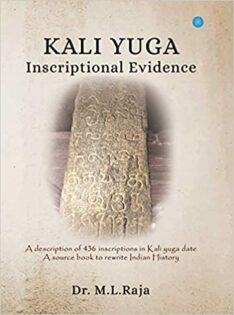
Click here to buy Dr ML Raja’s Kali Yuga: Inscriptional Evidence published by Bluerose Publishers, New Delhi.
Dr. S. Kalyanaraman, Indologist, Director Saraswati Research Institute Chennai, Former Senior Executive Asian Development Bank, Manila, Philippines wrote about Dr ML Raja’s work thus:
This tour de force by Dr.M.L. Raja has documented 436 epigraphical inscriptions, from almost all languages of the nation and includes a corroborating Tamralinga inscription of King Candarbhanu written in Sanskrit from Thailand. Analysing this stunning compilation of incontrovertible evidence with great care, and painstaking review of the texts, he proves the beginning of Kaliyuga in 3101 B.C.E. Dr.M.L.Raja has made the most significant and brilliant contribution to Indian History, traditions of Indian Civilization and will stand the test of time, mahākāla.
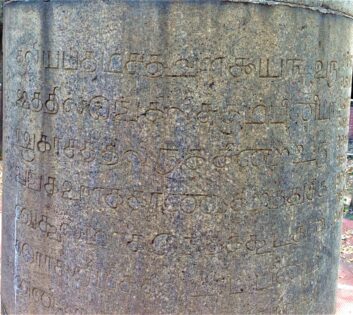
T.K.V. Rajan, Archaeologist, Director, Indian Science Monitor and Indo-Asian Foundation of Archaeological Research gave his feedback on this book thus:
This much-awaited book is an excellent resource for the studies about Kali Yuga. This book removes the perception that the Yugas mentioned in the Indian scriptures is merely imaginary. The author Dr.M.L. Raja with vigour and determination was able to collect 436 inscriptions those were recorded with the chronology of Kali Yuga and he successfully fixed the date of Kali Yuga to 3101 B.C.E. His research opens an optimistic threshold to rewrite the chronology of the ancient history of India. I recommend this invaluable book to the Indologists, research scholars, students and the general public who are interested to safeguard our heritage and culture.
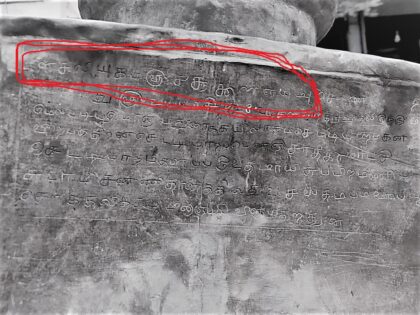
T. Satyamurthy, Former Superintending Archaeologist, Archaeological Survey of India, Former Director of Archaeology, Government of Kerala, wrote about this book:
The scenario is completely changed as the learned author has now tabulated as much as 436 inscriptions with Kali yuga era date. The hard labour of Dr.M.L.Raja in documenting the numerous inscriptions of different languages, regions is laudable and the research methodology adapted by him is a source of inspiration for young scholars.
Images of inscriptions provided by the author.
Dr ML Raja
Latest posts by Dr ML Raja (see all)
- 436 Inscriptional Evidences on Kaliyuga and its Timeline; An Analysis - October 23, 2024

